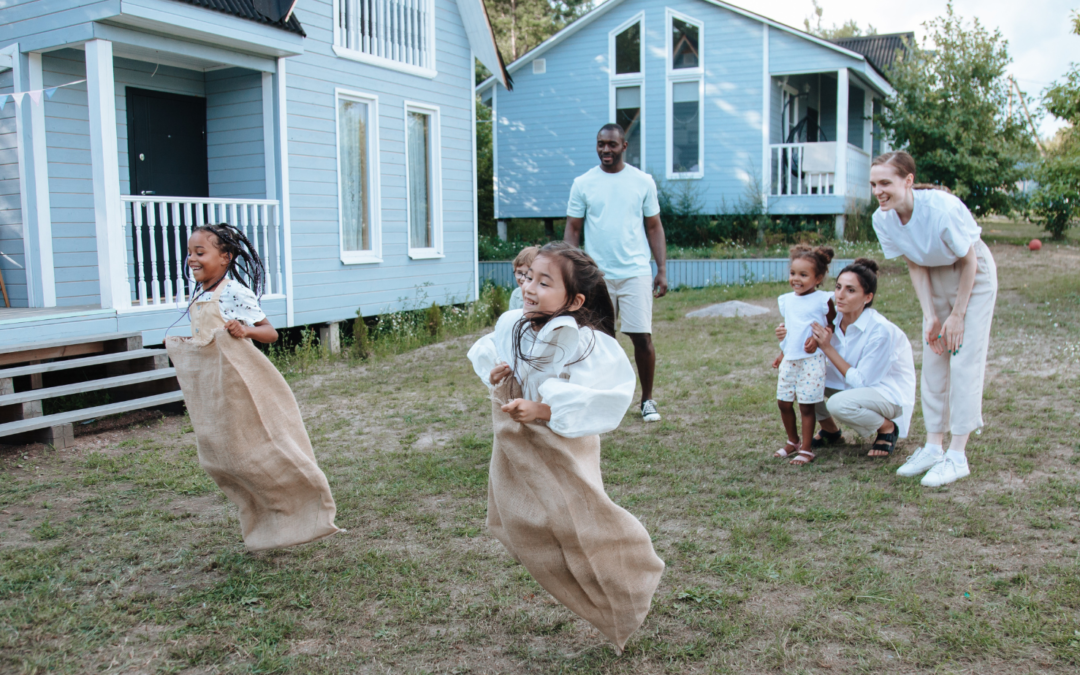Exercise is one of the most common triggers of asthma symptoms in children, and exercise-induced bronchoconstriction (EIB) is narrowing of the airway that occurs with exercise. Children typically experience chest tightness, shortness of breath, cough, wheezing, or difficulty breathing specifically with exercise. The exact cause of EIB is unknown but suspected to occur when cells causing inflammation are released in the airway. In addition, large volumes of cold, dry air inhaled into the airway cause rapid loss of the heat and water from the airway lining leading to bronchoconstriction, or airway narrowing. If a clear diagnosis of EIB is in doubt, an exercise challenge test may be completed to confirm a decrease in lung function and forced expiratory volume in 1 second (FEV1) after exercise. Children run on a treadmill or ride a bike while breathing dry air, and serial lung function testing is completed. If there is a fall in lung function (FEV1) by a certain percentage from normal, the test shows exercise-induced asthma. Alternatives to exercise testing have been developed for the diagnosis of EIB. Bronchoprovocation testing irritates the airway with a substance such as mannitol (dry powder), cold air, or methacholine, an inhaled drug causing mild airway narrowing. If lung function decreases after exposure to these challenges, a diagnosis of exercise-induced asthma is likely. An exercise test or bronchoprovocation testing for most kids is not needed. Children and their parents simply report shortness of breath specifically with an activity that is alleviated by rest.
(Expert Tip)
Use of albuterol or a rescue inhaler 2 puffs with a spacer 5-15 minutes prior to activity helps prevent exercise-induced asthma symptoms
Exercise-induced asthma is typically seen 2-10 minutes after heavy exercise, and not at maximum intensity exercise. Pretreatment before exercise with a rescue medicine such as albuterol is recommended to prevent exercise-induced asthma symptoms. If a rescue medication such as albuterol is needed more than once per day, a controller medication or long-term asthma medicine is usually added.
Warming up is important to decrease exercise-induced asthma symptoms caused by cold air. The nose warms, filters, and moistens air entering the airway. Kids should learn to breathe in through their nose and out through their mouth when exercising. In addition, children should warm up with a mask or scarf over the mouth if exercising in cold air.
Here are some recommendations and facts about exercise-induced asthma
- Physical activity is recommended for all children to keep them healthy. Although the age-old saying “use it or lose it” does not necessarily apply to children with asthma or the lung, it is important to encourage children with asthma to exercise. Weight gain is associated with worsened outcomes in asthma.
- Children with exercise-induced asthma are more likely to limit their physical activity level and be sedentary. Exercise is safe for children with asthma as long as their symptoms have been controlled with the proper medications.
- Studies show that low-risk sports for children with exercise-induced asthma include those with under 10 minutes of concentrated effort such as tennis, gymnastics, golf, martial arts, fencing, and track and field (sprinting 100m-400m).
- Higher risk for exercise-induced asthma are sports requiring a high level of intensity for longer periods of time in cold or dry air, such as long-distance running, cycling, ice hockey, and ice skating.
- Exercise-induced asthma is common in elite athletes and those participating in endurance sports may be at higher risk. Children competing in endurance exercises may experience stress, inflammation, and damage to the airway with repeated high-intensity or long-duration workouts.
Letting your children exercise is important but it is more important to take care of their health first. If your child, is not used to exercise, please introduce activities slowly. In addition, for some exercises, you need to consult with your practitioner or doctor first. You do not want to overstretch or overwork your children triggering more complications.
Note: Please do not use this information as professional advice. We advise you to seek opinions from a medical professional”
Be Well,
Dr. JoiMD

